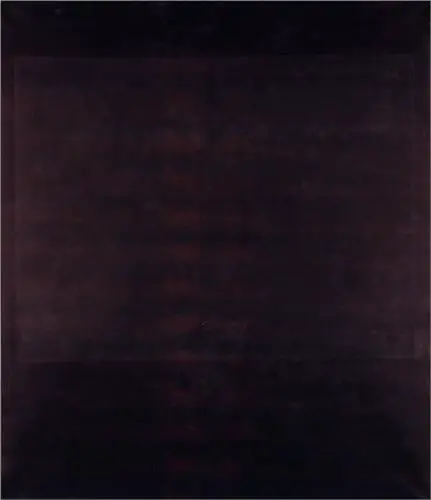Despite spending much of his adult life in New York City, though, he was born in Latvia and spent time in Russia - which may initially go some way to shedding light on the curious nature of his work. One gets the sense there was always something deeper lurking beneath the deceivingly simple presentation of his paintings. The minimalist 'No. 4', painted in 1964, is a fine example of this style.
Initially it doesn't look like much at all. This is an intensely dark painting with little in the way of distinguishing features but which nonetheless seems to pull you in with its essence, similar to how we are endlessly fascinated by the nature of black holes in outer space. Look closer, however, and you notice this isn't an entirely blackened image, with a subtle mix of brown and purple layers giving the distinct impression there's something more going on here.
Being able to apply such thin, subtle layers of paint was a technique Rothko had perfected by the time he composed this piece in the early 1960s. It helped set him apart from contemparies and indeed helps his paintings continue to stand out even today. Though difficult to distinguish at a glance with the naked eye, those who take the time and effort to examine this piece closely can't help but appreciate the work that went into it.
As to its meaning, like all iconic works of art, this is best left to personal interpretation. Possible clues can, however, be extrapolated from Rothko's life and career. The dark layers of this particular painting may be related to a conflicting sense of identity within the artist, inwardly torn between the Eastern European countries of his birth and early upbringing, and the American environment in which he spent his adulthood.
At the time of this painting, Rothko was also approaching the end of his career, and indeed his life. Like many famous artists, he led a modest lifestyle and would only achieve truly universal recognition after his death. He appeared frustrated by the rise of 'pop art' from younger artists in the early 1960s, which may have had an influence on his eventual suicide in 1970. What 'No. 4' arguably shows us is a talented individual whose surface layers hid a darker hidden turmoil.

